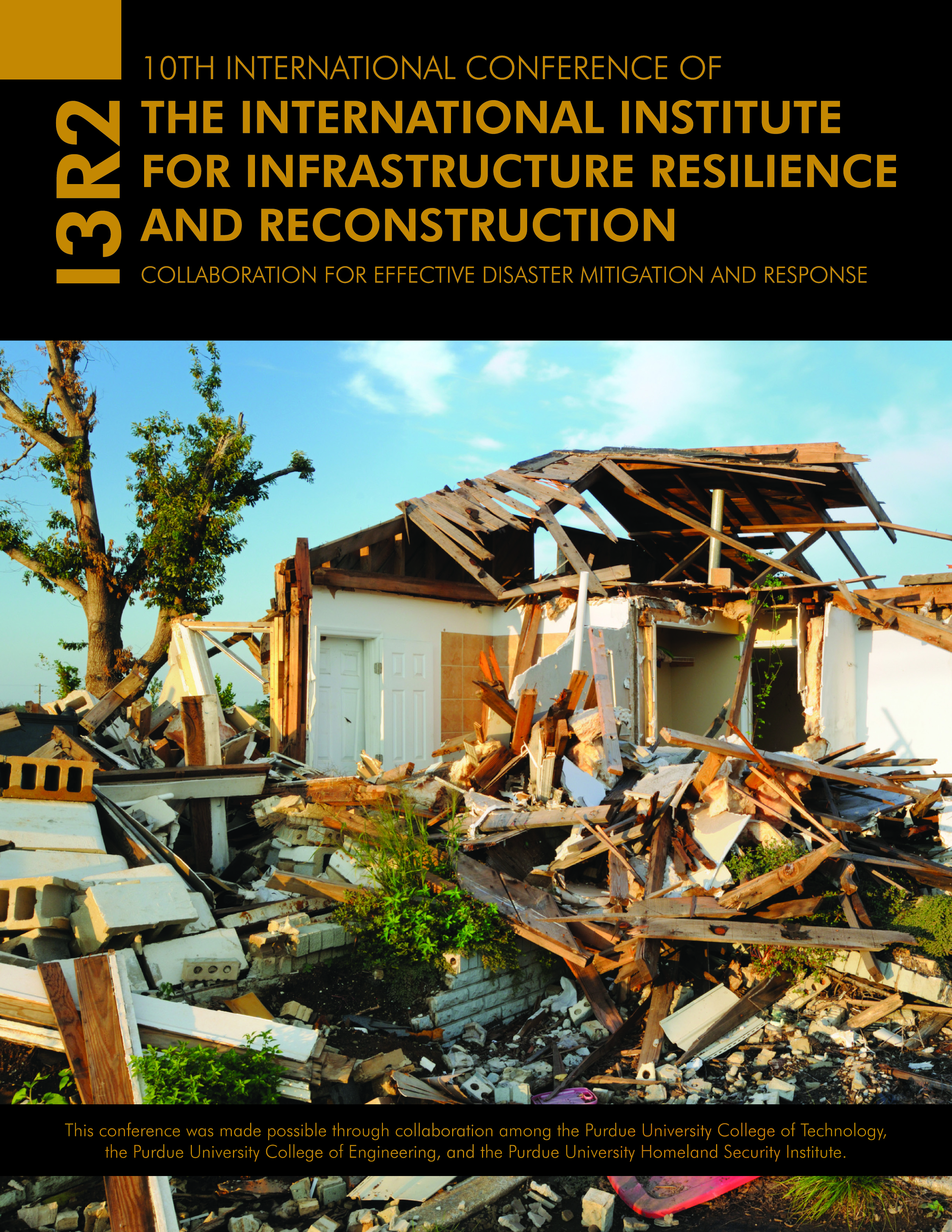Abstract
The purpose of this paper is to review recent developments to use RFID (Radio Frequency Identification) for supply chain logistics in the construction industry and identify potential applications of this technology for disaster recovery in construction operations. Natural disasters, terrorist attacks, and extreme weather conditions can cause significant damage to local communities and disruptions to the local supply chain. The effective movement of resources during disaster recovery operations is critical in a postdisaster recovery environment. RFID technology has advanced to the level that the technology could be used to improve the supply chain preparedness, people, material and equipment locating and tracking, and corresponding billing operations in many industries. Current RFID technology could be used in the construction industry in areas to automate material tracking in off-site warehouse of construction firms or suppliers, to establish initial location of material received on construction sites, to track materials that are being shared and in common areas for multiple construction sites, to restock material in laydown or warehouses, to minimize material over-ordering with better tracking of quantity information, to reduce loss from theft and support site security measures, and to assist site equipment and fuel management.
Studies have shown that 3.1% of total construction costs could be saved after implementing RFID technology tagging and tracking materials on site and in warehouses. In the case of after-natural-disasters reconstruction, materials locating and tracking activities are highly valuable because disaster relief reconstruction site conditions are more challenging than regular construction site conditions. Reconstruction resources are often limited and difficult to move in and out. Significant construction cost savings can be achieved with RFI-enabled material tracking and locating systems. A review of the current technology provides many emerging applications of RFID technology for the broader construction industry. This paper examines direct applications of RFID for disaster relief reconstruction operations.
DOI
10.5703/1288284315373
Recommended Citation
Wang, H., Hubbard, B.J., & Hubbard, S. (2014). RFID Applied to Supply Chain Logistics in Disaster Recovery. In Randy R. Rapp & William Harland (Eds.), The Proceedings of the 10th International Conference of the International Institute for Infrastructure Resilience and Reconstruction (I3R2) 20-22 May 2014. (207-211). West Lafayette, Indiana: Purdue University.
RFID Applied to Supply Chain Logistics in Disaster Recovery
The purpose of this paper is to review recent developments to use RFID (Radio Frequency Identification) for supply chain logistics in the construction industry and identify potential applications of this technology for disaster recovery in construction operations. Natural disasters, terrorist attacks, and extreme weather conditions can cause significant damage to local communities and disruptions to the local supply chain. The effective movement of resources during disaster recovery operations is critical in a postdisaster recovery environment. RFID technology has advanced to the level that the technology could be used to improve the supply chain preparedness, people, material and equipment locating and tracking, and corresponding billing operations in many industries. Current RFID technology could be used in the construction industry in areas to automate material tracking in off-site warehouse of construction firms or suppliers, to establish initial location of material received on construction sites, to track materials that are being shared and in common areas for multiple construction sites, to restock material in laydown or warehouses, to minimize material over-ordering with better tracking of quantity information, to reduce loss from theft and support site security measures, and to assist site equipment and fuel management.
Studies have shown that 3.1% of total construction costs could be saved after implementing RFID technology tagging and tracking materials on site and in warehouses. In the case of after-natural-disasters reconstruction, materials locating and tracking activities are highly valuable because disaster relief reconstruction site conditions are more challenging than regular construction site conditions. Reconstruction resources are often limited and difficult to move in and out. Significant construction cost savings can be achieved with RFI-enabled material tracking and locating systems. A review of the current technology provides many emerging applications of RFID technology for the broader construction industry. This paper examines direct applications of RFID for disaster relief reconstruction operations.



